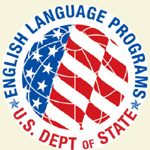Lesson Plan Title: Art and Power: Mutual Understanding.
Skills Covered: Reading, writing, speaking and listening skills.
General Goal(s): The students will develop reading, speaking, listening and writing skills necessary for recognition and interpretation, analysis and evaluation of the work of sculpture.
Specific Objectives:
• develop students’ knowledge of sculpture art
• learn vocabulary units to be used in discussion
• develop students’ ability to use vocabulary items for talking about famous works of sculpture
• learn how to characterize and evaluate the work of sculpture
• take part in the discussion and role-play devoted to sculpture
Materials / Visual Aids: Projector, computer for presenting the picture of Benjamin Franklin’s statue (1862) by Hiram Powers or slide projector and the slide with the picture of the monument to Benjamin Franklin.
Glossary
Words are listed in the order in which they appear in the text
initiate(d) (v + o) – start or cause to happen
titillate(d) (v, v + o) – tease, please and excite
lucrative (adj qualit) – profitable
paradoxically (adv sen) – surprisingly
crease (n count) – irregular line that appears on cloth, wrinkle
contemplative (adj classif) – deeply thoughtful in a serious and quite way
pensive (adj qualit) – meditative, dreamy, thoughtful and quiet
• Warm-up activity (Class Discussion, 10 minutes). Discuss the following questions:
- What is the most famous monument in your city? Why is it so famous?
- Why do people create statues of famous persons?
- What is / are the most popular sculptor(s) of your country?
- Have you ever been to a sculptor workshop / studio?
- Have you ever tried to produce something from plasticine or clay?
- What inspired you to make it?
- Whose statue would you like to create in your town or the capital of your country? Give your grounds.
Activity 1 (15 minutes). The students are expected to free write about the monument to a world-famous citizen to be constructed in the central square of the town on occasion of the city jubilee. Ask them what statue they would prefer to see in the center of their city: a world-famous poet, a progressive statesman or a prominent scientist, etc.
Follow-up Activity (5 minutes): Talk to your partner about your choice. Give your grounds.
Activity 2 (5 minutes). Discuss in pairs what kind of sculptures can be made of:
- marble; b) clay; c) stone; d) wax; e) bronze; f) ivory; g) wood; e) plaster.
Follow-up Activity (15 minutes). In turn describe a well-known work of sculpture using the words mentioned above and the following expressions:
full-length portrait, bust, self-taught artist, larger-than-life-size statue, plaster model of a person, to model the attire, small-scale figures, proportion, ideal aspect, to experiment with new material and technique, aiming for dramatic effect, new and complex imagery, to observe the human body in action, aesthetic progression, representation of the human figure, human action studied from nature, to explore intrinsic qualities of color, brushwork and form.
Activity 3 (15 minutes). Role-play activity. Reproduce a business meeting of a young but promising sculptor intending to create a new monument, a city mayor, and a businessman who is eager to invest his money in a project. The mayor dislikes the idea of making a new statue as he finds it absolutely pointless and unprofitable. The sculptor is sure that art is worth sponsoring.
Activity 4 (15 minutes). Render in turn with your partner a well-know myth of Pygmalion and Galatea, using words and word combinations from the list below:
to create the illusion of skin to inspire to carve a sculpture from
in marble
to capture the weight and bulk graceful poses to be naturalistic in style
of clothes
well-rounded forms workshop
EXTENSION: (Homework)
Make a report choosing one of the following topics:
- Historical epochs that can be called the “palm days” of sculpture.
- Types of sculpture: freestanding sculpture, kinetic sculpture, environmental sculpture, minor sculpture - decorative stucco and cameos.
- Statuary and relief.
- Analyze the work of sculpture “Benjamin Franklin” (1862) by Hiram Powers.
|

